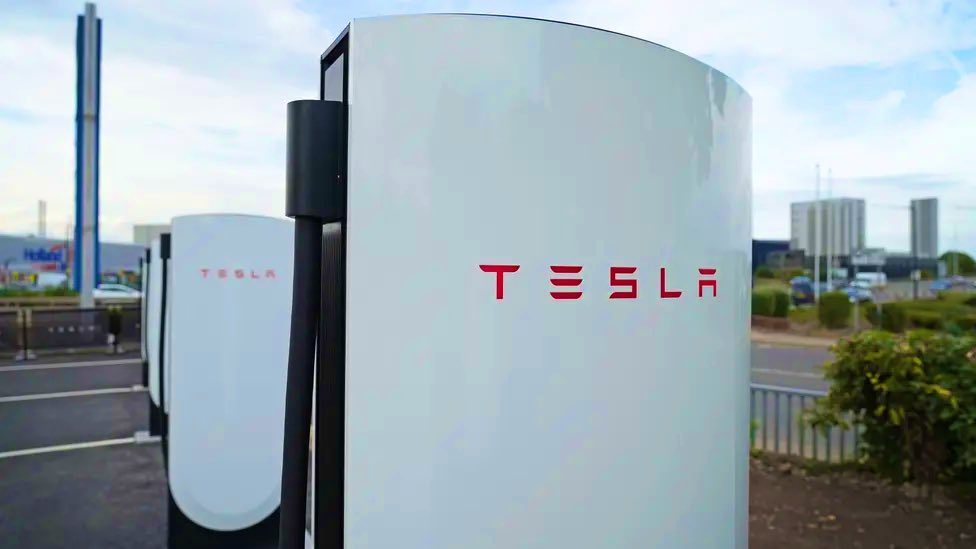In March 2023, Tesla unveiled its V4 Superchargers, marking a significant leap in electric vehicle (EV) charging technology. With an impressive power output that promises to rejuvenate an EV’s battery faster than ever before, Tesla’s latest innovation is set to redefine the landscape of sustainable transportation. As the world witnesses a rapid shift towards electric mobility, understanding how these new Superchargers are transforming the EV charging experience is crucial for both current and prospective EV drivers.
In this article, you’ll explore the groundbreaking features of Tesla’s V4 Superchargers, understand their impact on the EV charging infrastructure, and learn how they fit into the broader context of global mobility trends.
The Evolution of Tesla Superchargers
The Journey to V4 (H2)
Tesla’s Supercharger network has been at the forefront of EV infrastructure since its inception. The journey began with the first-generation Superchargers in 2012, offering a comparatively modest 90 kW of power. Fast forward to 2019, and Tesla introduced the V3 Superchargers, capable of delivering up to 250 kW. Now, with the V4 iteration, Tesla has pushed the envelope further, offering up to 350 kW, a testament to how far the company has come in just over a decade.
- Enhanced Power Output: At 350 kW, V4 Superchargers can potentially charge a Tesla Model S to 80% in about 15 minutes.
- Compatibility: Designed to accommodate a variety of EV models, including non-Tesla vehicles through the CCS adapter.
- Increased Efficiency: Reduces charging times, making long-distance electric travel more feasible than ever.
Key Features of V4 Superchargers (H2)
With the launch of the V4 Superchargers, Tesla has introduced several innovative features that enhance user experience and efficiency.
- Liquid-Cooled Cables: These cables are lighter and more flexible, making them easier to handle while ensuring safe and rapid energy transfer.
- Dynamic Power Sharing: Allows multiple vehicles to charge simultaneously without compromising charging speed.
- Enhanced User Interface: Includes a touchscreen that provides real-time charging data and estimated completion times.
Impact on Global Charging Infrastructure
Expanding the Network (H2)
Tesla’s strategic placement of V4 Superchargers is pivotal to its mission of making EV travel seamless across vast distances. By the end of 2023, Tesla aims to have over 40,000 Superchargers worldwide, with a significant portion being V4 models. This expansion is not just about quantity but also about strategic placement, ensuring that all major routes are well-covered.
- Strategic Locations: Focus on high-traffic areas and underserved regions to enhance network accessibility.
- Collaboration with Local Governments: Partnering with cities to streamline installation and enhance grid capacity.
- Sustainability Efforts: Many new Supercharger stations are powered by renewable energy sources, aligning with Tesla’s commitment to sustainability.
Practical Guide to Using V4 Superchargers
How to Charge (H3)
Charging your EV at a V4 Supercharger is designed to be intuitive and user-friendly. Here’s a quick guide:
- Locate a Supercharger using the Tesla app or in-car navigation.
- Plug in your vehicle using the lightweight, liquid-cooled cable.
- Monitor charging via the Supercharger’s touchscreen or your Tesla app, which provides real-time updates and estimated completion times.
- Complete your charge and continue your journey, enjoying the efficiency of rapid charging.
Where to Find V4 Superchargers (H3)
The Tesla app offers the most convenient way to locate V4 Superchargers. Here’s what to do:
- Use the “Find Us” feature in the app to locate the nearest V4 Supercharger.
- Plan your route with Tesla’s Trip Planner, which automatically suggests charging stops.
- Check station availability in real-time to avoid waiting times.
The Future of EV Charging
As Tesla continues to innovate, the future of EV charging looks promising. The V4 Superchargers not only enhance the user experience but also set a benchmark for other manufacturers. With the global electric vehicle market projected to reach 233.9 million units by 2027 (Bloomberg Green), the need for efficient and widespread charging solutions is more critical than ever.
Conclusion
Tesla’s V4 Superchargers represent a monumental step forward in the evolution of EV infrastructure. By reducing charging times and expanding the network’s reach, Tesla is making electric vehicles more viable for everyday use and long-distance travel. As these Superchargers continue to roll out globally, the convenience and efficiency they offer will undoubtedly encourage more drivers to make the switch to electric.
Are you ready to embrace the future of sustainable transportation? Explore Tesla’s V4 Superchargers and experience the cutting edge of EV technology today. As we look to the horizon, the electrification of transport is no longer a distant vision but an exciting reality reshaping our world.

